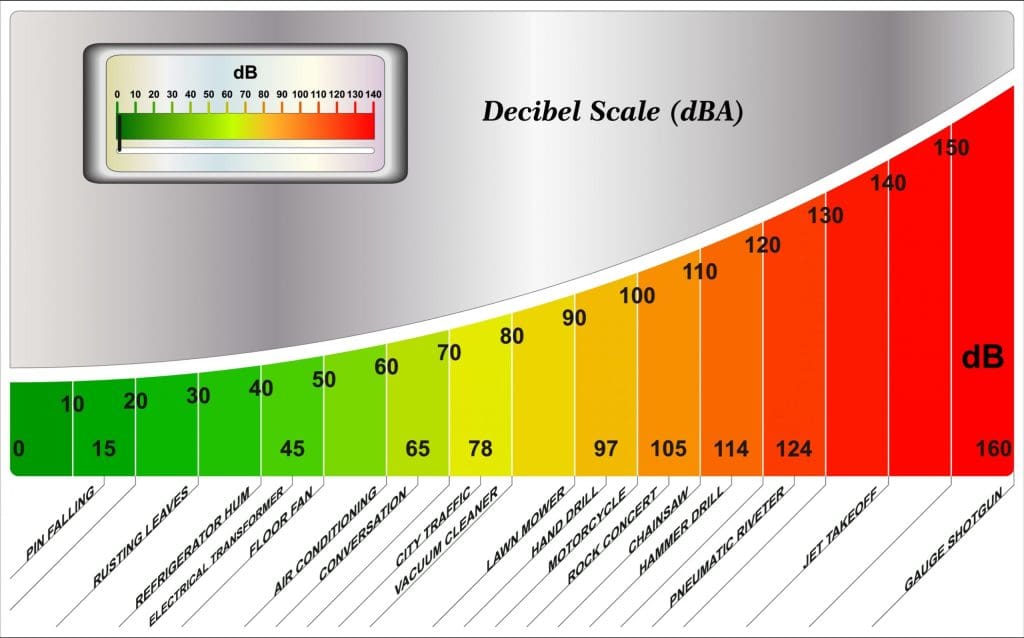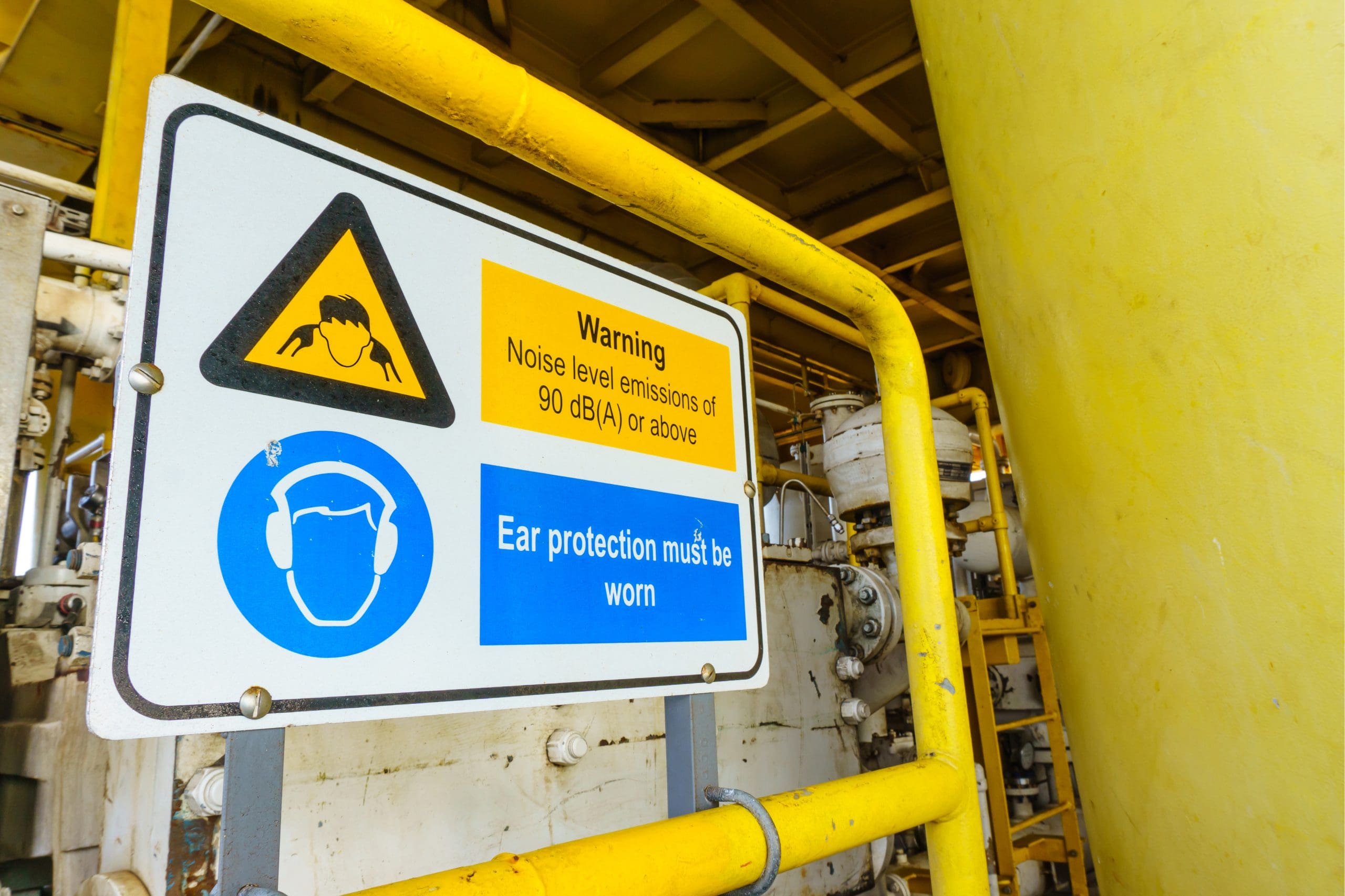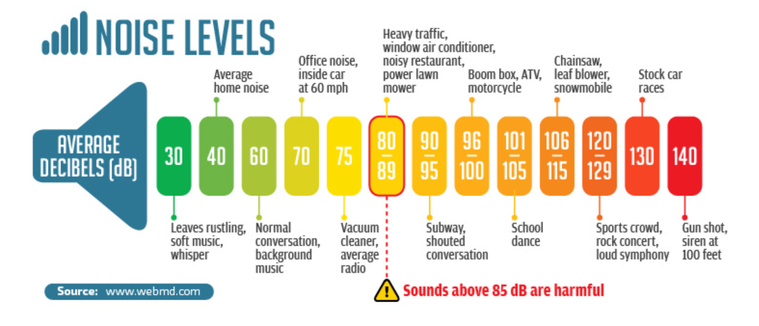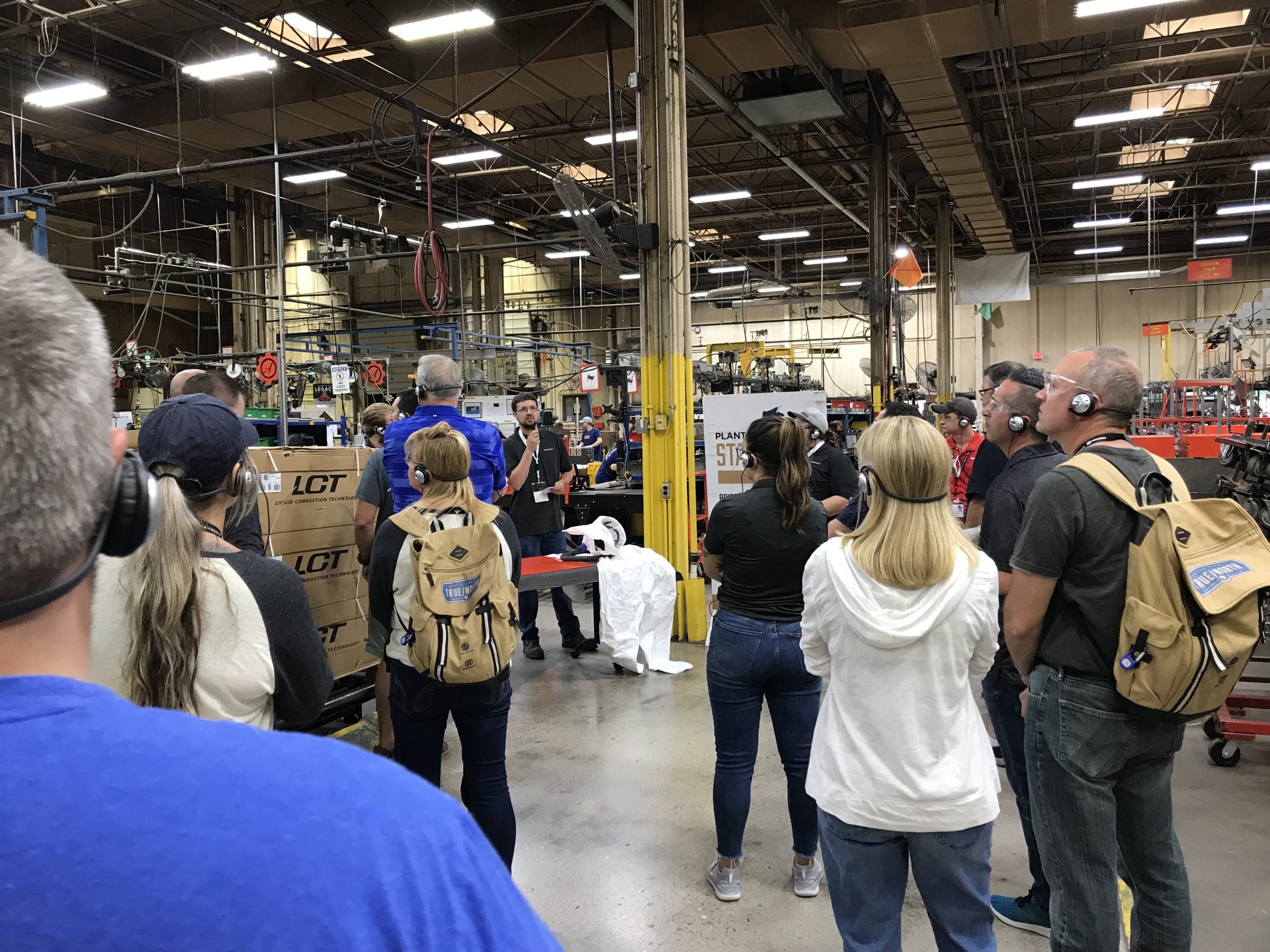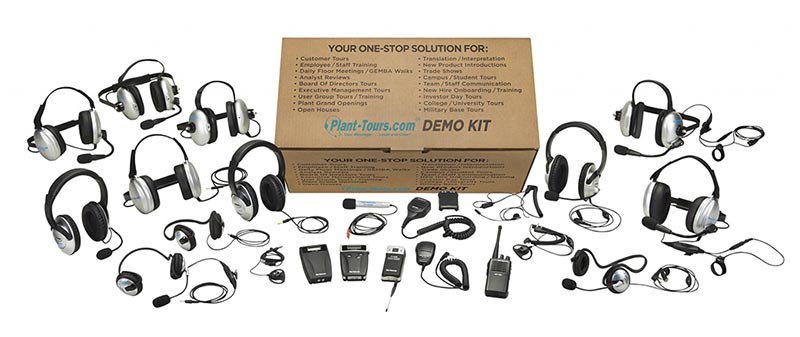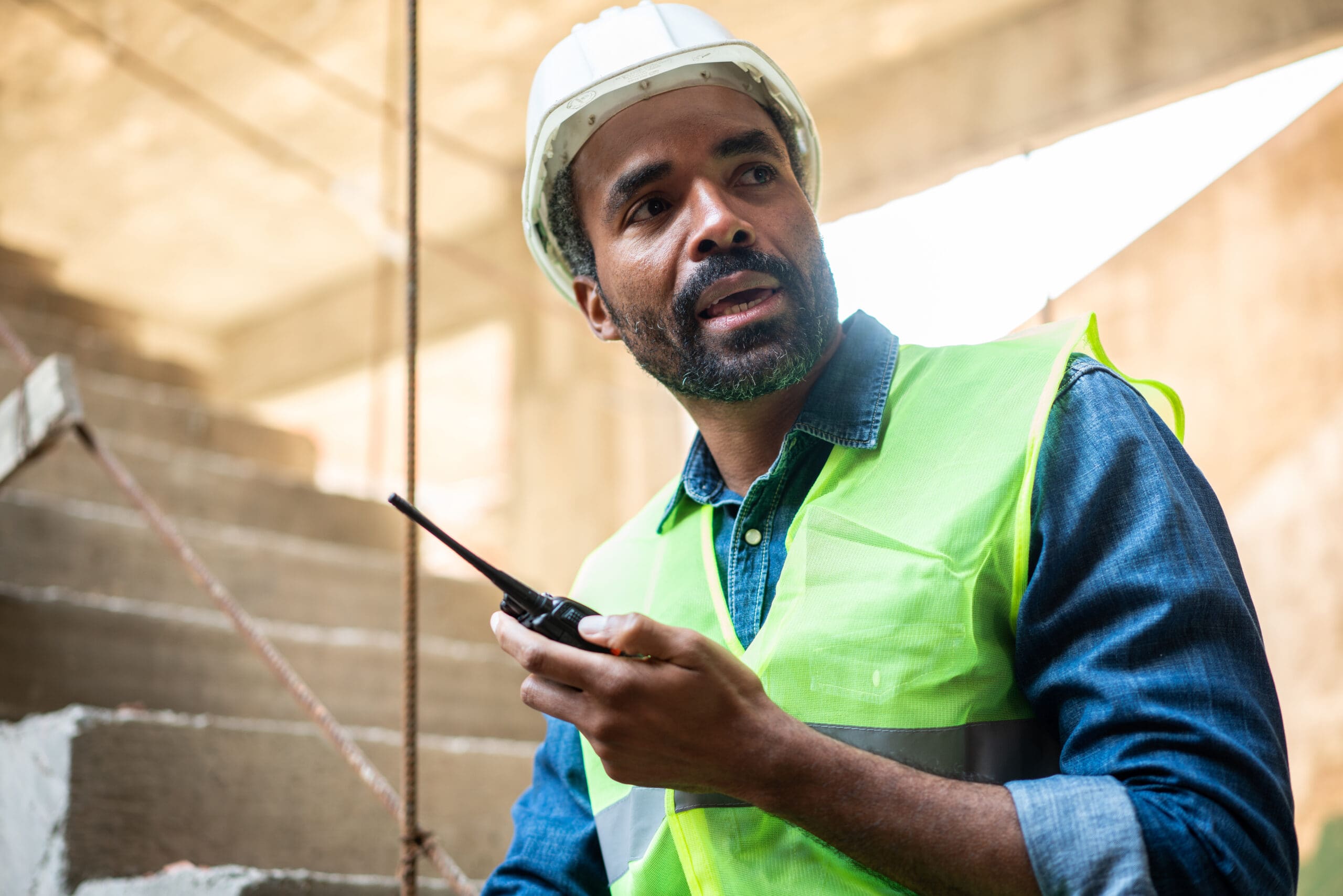What are noise reduction ratings?
Loud noises are damaging to our ears, and they can lead to permanent hearing loss in some cases. Whenever you hear a noise, the sound is converted into waves. Your brain interprets these signals into sounds, like music or an engine. Although there are millions of different sounds we’re capable of hearing, they all occur as waves.
Noise reduction ratings, or the NRR, determines how well protective equipment protects the wearer’s ears. Equipment such as ear plugs, earmuffs, and headsets all have their own NRR. According to the National Institute for Occupational Safety and Health (NIOSH) and the Occupational Safety and Health Administration (OSHA), users should reduce the effectiveness of devices’ NRR ratings to understand the true rating.
The OSHA suggests reducing every protection device’s NRR by 50%, and the NIOSH suggests derating earplugs by 50% and earmuffs by 25%. You should always choose a device with the most ear protection to prevent hearing loss.
How to Measure Noise?
What makes some sounds so much louder than others? And why do they feel differently (think about the difference between wind chimes and a jet engine). Loudness comes from decibels, or dBs, which are units that measure the intensity of a sound.
The more decibels a sound produces, the louder it is to our ears. Noise exposure to high decibel frequencies can lead to hearing loss. In certain industries, employees wear ear protective gear that reduces the noise (or decibels) that their ears receive.
You also have to consider the dBA, or A-weighted decibel rating. The A-rating describes how the human ear responds to both the sound and its dB. “A-weighted” refers to how the decibels are measured.
The easiest way to check a noise level where you work is by using a noise level meter, also called a sound level meter. This device uses a microphone to pick up sound waves, then convert them into decibels, so you can find out exactly what level of ear protection is right for you.
The higher the decibels, the greater the NRR rating you need.
The U.S. Environmental Protection Agency (EPA) and the World Health Organization (WHO) recommend keeping environments below 70 dBA over a 24-hour period, and 75 dBA over an 8-hour period.
how do you calculate nrr?
The NRR is the most important figure when it comes to choosing the right ear protection, but it isn’t always easy to calculate. While all hearing products are required to print their NRR according to the EPA Regulation 40 CRF Part 211, the lack of understanding surrounding NRR can pose challenges to consumers.
NRR testing should follow the American Standards Institute protocol (ANSI S 3.19-1974). Under this regulation, an experienced researcher fits 10 people with devices called a Real-Ear Attenuation at Threshold, or REAT.
They must be exposed to 9 different sound frequencies set at the following hertz levels:
- 150
- 250
- 500
- 1000
- 2000
- 3150
- 4000
- 6300
- 8000
Then, the test measures reduction in sound for each person. The researcher gains 30 results for every individual, then averages the numbers. The average among all participants is the NRR number.
The actual efficacy of attenuation (noise reduction) will vary by product and individual. Because of physiological differences, two people could require different NRR ratings in the same environment.
You can calculate the NRR you need by performing the following test:
- Measure your environment’s noise level in decibels
- Subtract seven from a product’s NRR number
- Divide the result by 2
- Subtract the result from your original noise level in decibels
Noise Reduction Rating Chart
It’s helpful to understand an NRR rating based on sounds we’re already used to hearing. The following chart will help you better understand what level of noise protection you need based on how loud your environment is.
Painful
Painful decibels range from 120 to 140 dB. These sounds are as high-pitched and forceful as a police siren, jet engine, fireworks, or a gunshot. Exposure to these sounds for any prolonged period can lead to physical pain, discomfort, and hearing loss.
Extremely Loud
Sounds ranging from 90 dB to 110 dB are considered extremely loud. Industrial plants, airplane hangars, and warehouses using power tools are common environments with extremely loud NRR ratings.
Very Loud
Traffic, alarm clocks, and vacuum cleaners all produce sounds between 70 dB to 80 dB. These are considered very loud, and exposure to any sound over 85 dB can lead to hearing loss.
Moderate
Moderate sounds are safer for us to hear, though they may still be disruptive. The average TV, for example, can play around 70 dB. And a normal speaking conversation produces around 60 dB of sound. You won’t need professional hearing protection at this level, but earplugs may be beneficial for those who are sound sensitive or easily distracted.
Faint
At the faintest side of the spectrum, sounds like rustling leaves and a whisper produces around 30 to 50 dB of sound. A quiet room in a library is usually around 40 dB. These are the most peaceful (and safest) environments for our hearing.
Save Your Hearing
In order to protect your ears and hearing in the long run, choosing the right protective devices is key. Everyone’s ears are different, and they have to choose devices that are not only comfortable but also have the right NRR rating for their environment.
Someone who uses a headset system for construction, for example, will need a higher NRR than someone who works in a garage.
What Is a Good Noise Reduction Rating?
Good NRRs reduce noise levels between 25% to 50%. Generally, you should opt for a device with an NRR of at least 30, especially if you’re operating loud machinery or firearms.
Effect of NRR On Exposure?
Hearing protectors, like earplugs, can prevent hearing damage and permanent hearing loss from loud noise exposure. For people whose professions require them to be in loud environments for long periods of time each day, wearing devices with good NRR ratings is essential to their auditory health.
Who Should Be Wearing Hearing Protection?
The NIOSH recommends that anyone exposed to sounds 85 dB or higher for an 8-hour period should wear protective hearing devices. This suggestion coincides with the occupational exposure limits (OEL) in Canada for noise.
Hearing protection includes headphones, earplugs, and earmuffs. The exact type of device you wear is not as important as its NRR. The greatest goal is finding a device that properly reduces noise to safe levels for the type of work you perform.
Types of Noise Reduction Headphones
Noise-cancelling headphones aren’t only for preventing occupational hazards. They’re a part of our everyday lives! Just look in any store, and you’ll see most headphones are advertising as noise-cancelling.
Even people who work from home or in offices find themselves looking for headphones that reduce noise. Quiet helps us focus, and it can bring us some much-needed reprieve when a chatty coworker takes a call, or the neighbor is mowing the lawn.
You can buy noise reduction headphones that are in-ear or over-the-ear, and each one has different benefits depending on your needs and personal preferences.
Best Headphones for Noise Reduction
Look for headphones that offer an NRR between 22 and 33. The highest NRR rating is 33, and it’s ideal for people who work in extremely loud environments, like shooting ranges. Your noise cancellation needs will vary, but you should opt for headphones that comfortably reduce the level of noise you hear without completely blocking out all sound.
Headphones should also be easy to sanitize, durable, and lightweight. Consider where you’ll use your headset, such as for work, travel, or leisure.
Plant Tours Noise Reduction Headsets
Plant Tours offers a variety of noise cancellation headsets that are ideal for a variety of environments. The MT-370 is perfect for moderate to high-noise environments. It features an adjustable, padded headband for optimal comfort, and easy-to-clean ear pads that can be wiped down repeatedly and even replaced if necessary.
In louder environments, like factories, the PT-200 and PT-250 headphones are the highest grade options available. They well-fitted but lightweight, and they provide ample protection from extremely loud environments without totally compromising your hearing.
For a more lightweight alternative, the PT-350 Moderate Noise Headphones offer protection with a behind-the-head style fit. They offer complete coverage that hug the natural contour of the ear, and fit snugly while allowing room for a hard hat or similar protective gear.
organizations working toward preventing hearing loss
NIOSH provides information and programs that work toward preventing hearing loss due to the level of noise in the workplace.
ANSI is the organization that sets standards for nearly all industry or healthcare fields when it comes to noise levels. You’ll see the acronym ANSI on hearing protection devices with some numbers, referring to the code of compliance. This dates back to 1974 when the Acoustical Society of American (ASA) released their first ANSI Method for the Measurement of Real-Ear Protection for Hearing Protectors and Physical Attenuation of Earmuffs.
OSHA is heavily involved in workplace safety. According to their requirements, employers must have a hearing conservation program whenever the noise level is over 85 dB for eight hours.
The Environmental Protection Agency (EPA) has fought against noise pollution via the Clean Air Act Title IV, which acknowledges that unwanted noise has an adverse effect on citizens’ lives. The link between the permissible noise exposure level and health has been established. Noise can be the cause of health problems such as high blood pressure, sleep disruption, and hearing loss.
It’s necessary for workers in noisy environments to wear hearing protection that shields them adequately from excessive, unhealthy levels of noise. Knowing how to take care of your hearing is important, and exercising proper hearing care now can result in added benefits later in life.
